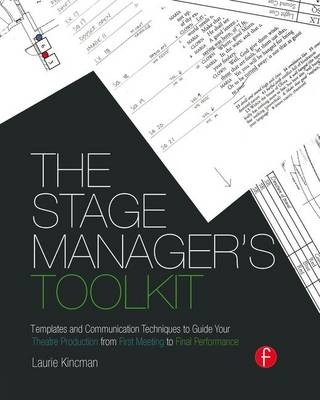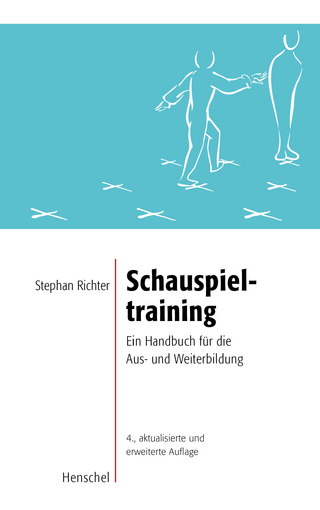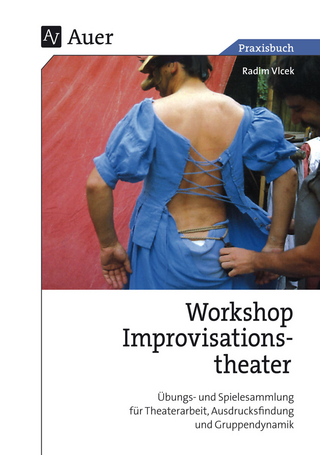
The Stage Manager's Toolkit
Routledge (Verlag)
978-1-138-12841-5 (ISBN)
- Titel ist leider vergriffen;
keine Neuauflage - Artikel merken
Introduces strategies for sharing information both in person and in writing
Explores how document design can enhance the accessibility and effectiveness of your reports, charts, and lists
Contains principles for web-based information sharing as well as hard-copy paperwork
Provides customizable paperwork templates on the accompanying website, allowing you to put the ideas to work on your own show
Other features:
Organized based on the chronology of a typical theatre production: pre-production work, rehearsals, the tech period, performances, and post-production duties. In each section, the book outlines the objectives for the stage manager and the communication techniques that will ensure success.
Provides examples of paperwork a stage manager commonly works with, including variations for plays and musicals, shortcuts for shows on an abbreviated time table, and strategies for maintaining consistency and legibility. The book highlights differences the stage manager may encounter when working on professional and academic productions.
Laurie Kincman is a faculty member in the Department of Theatre Arts at the University of Wisconsin-La Crosse, heading the undergraduate emphases in stage management and arts administration. Her professional credits as a stage manager and production manager include work with the Old Globe Theatre, Malashock Dance & Company, Shakespeare Festival/LA, Opera Pacific, the California Ballet Company, American Stage Festival, and for choreographers Jessica Iwanson and Donald McKayle. Laurie is a member of the United States Institute for Theatre Technology, the Production Managers Forum, the Stage Managers Association, the Association for Arts Administration Educators, and Actors Equity Association.
FOREWORD by David Grindle
Introduction: The Stage Manager as Communicator
ACKNOWLEDGEMENTS
Chapter One: Avenues of Communication
Face to Face Communication
Written Communication
Chapter Two: Principles of Document Design
Identifying Your Audience
Fonts
Color and Shading
Accessibility
Continuity
What’s In a Name?
Chapter Three: Pre-Production
The Given Circumstances
The Calendar
Analyzing the Production
The Character/Scene Breakdown
Meeting with the Director
Meeting the Production Team
The Prop List
Auditions
The Contact Sheet
Thinking About the SM Team
Chapter Four: The Prompt Book
Organizing the Prompt Book
Preparing the Prompt Script
The Script for the Musical
Chapter Five: Rehearsals
The First Rehearsal
Table Work
Music and Dance Rehearsals
Blocking
The Daily Call
Conflicts
Fittings
The First Runthrough
The Rehearsal Report
Production Meetings
Scene Work
Adding the Elements
Updating Paperwork
Chapter Six: Technical Rehearsals
Creating the Tech Schedule
Types of Tech Rehearsals
Preparing for Tech
Technology for the Stage Manager
Working with the Crew
The Preset List
The Shift Plot
Paperwork Variations
The Costume Plot
Cueing
Stepping Up to Run the Show
Rehearsal Reports during the Tech Period
Chapter Seven: Performances
Previews
Refining Your Routine
Opening Night
Working with Front of House
Changing Personnel
The Performance Report
Maintaining the Artistic Integrity of Your Show
Working with Understudies
Emergency Plans and Problem Solving
Chapter Eight: Next Steps
Moving the Production
The End of the Line- Or Is It?
Epilogue: FINAL THOUGHTS
APPENDIX
| Erscheint lt. Verlag | 29.9.2015 |
|---|---|
| Reihe/Serie | The Focal Press Toolkit Series |
| Zusatzinfo | 56 Line drawings, color; 23 Halftones, color; 17 Tables, color |
| Verlagsort | London |
| Sprache | englisch |
| Maße | 191 x 239 mm |
| Gewicht | 612 g |
| Themenwelt | Kunst / Musik / Theater ► Theater / Ballett |
| ISBN-10 | 1-138-12841-4 / 1138128414 |
| ISBN-13 | 978-1-138-12841-5 / 9781138128415 |
| Zustand | Neuware |
| Informationen gemäß Produktsicherheitsverordnung (GPSR) | |
| Haben Sie eine Frage zum Produkt? |
aus dem Bereich


